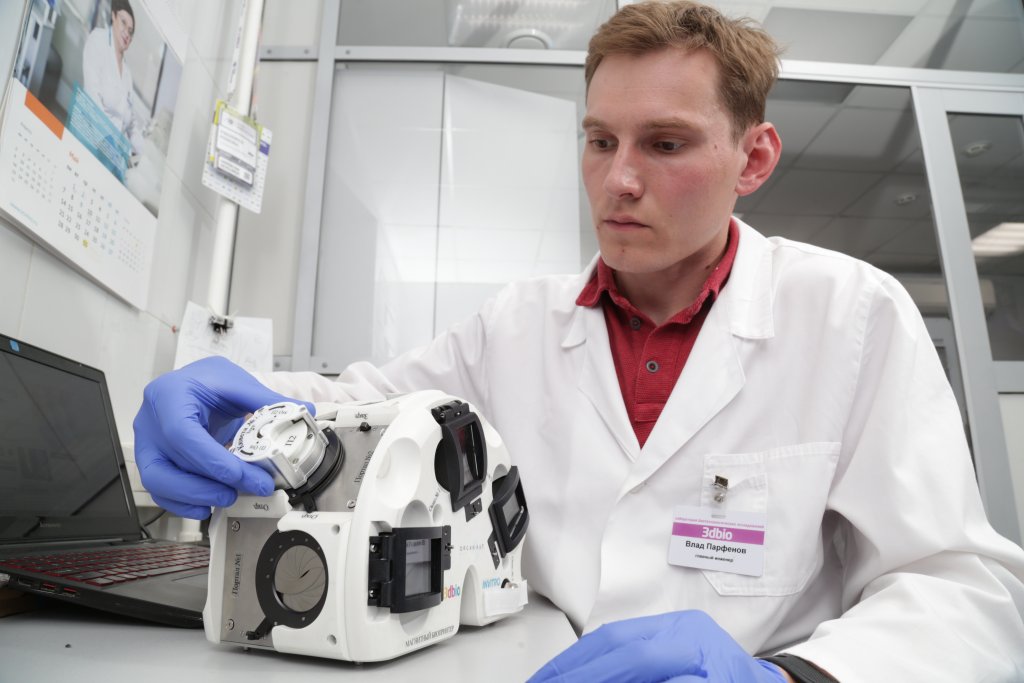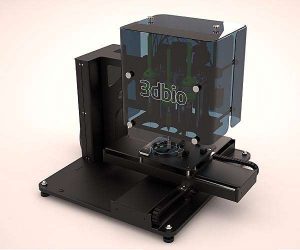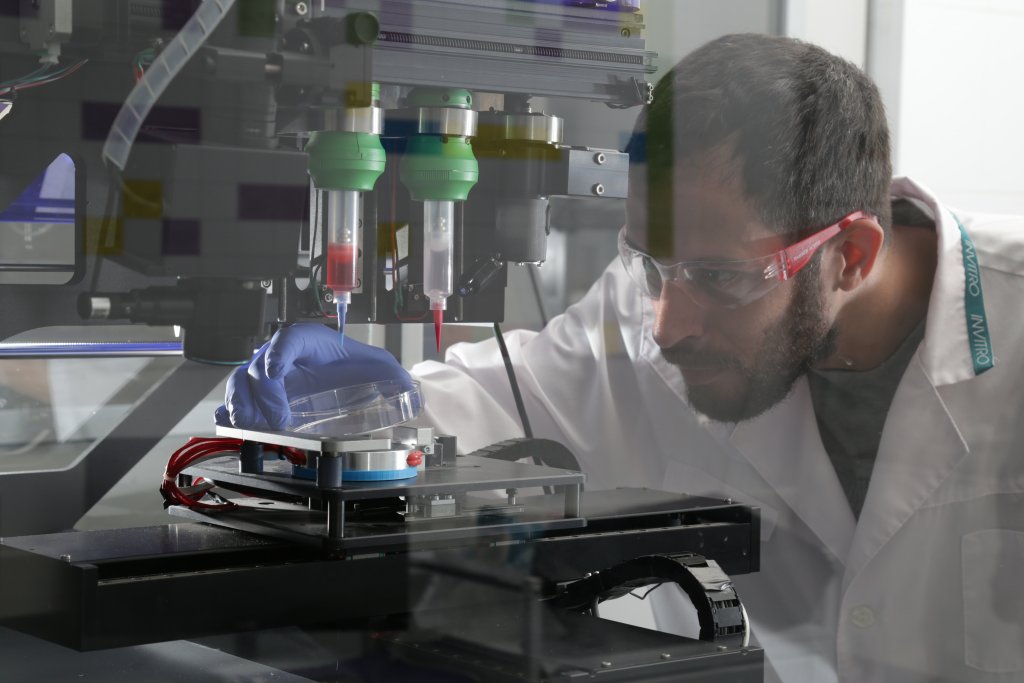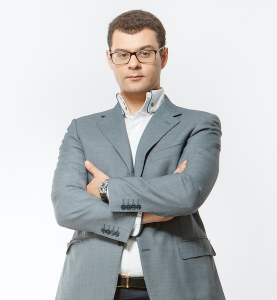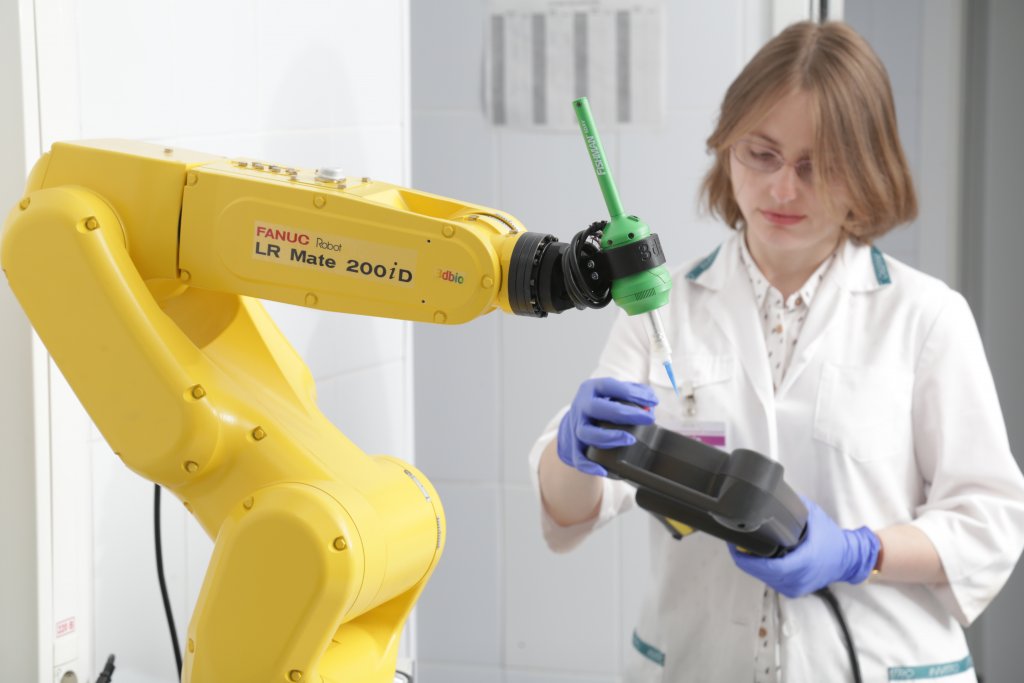3Д Биопринтинг Солюшенс, also known as 3D Bioprinting Solutions, is the only company developing b ioprinting technology and bioinks for commercial use in Russia. Back in the summer of 2014, they created the first Russian bioprinter: FABION. But there were more firsts for the company: late last year, their hardware, in the form of the OrganAut 3D bioprinter, made space history after being dispatched to the International Space Station (ISS) where Russian cosmonaut Oleg Kononenko represented his country as the first person to bioprint human cartilage tissue while in space. The Moscow-based firm is quick to become one of the big contenders of European biotechnologies, so 3DPrint.com spoke to co-founder Yusef Khesuani about how the company is preparing for the next steps in innovative biofabrication.
ioprinting technology and bioinks for commercial use in Russia. Back in the summer of 2014, they created the first Russian bioprinter: FABION. But there were more firsts for the company: late last year, their hardware, in the form of the OrganAut 3D bioprinter, made space history after being dispatched to the International Space Station (ISS) where Russian cosmonaut Oleg Kononenko represented his country as the first person to bioprint human cartilage tissue while in space. The Moscow-based firm is quick to become one of the big contenders of European biotechnologies, so 3DPrint.com spoke to co-founder Yusef Khesuani about how the company is preparing for the next steps in innovative biofabrication.
“Right now we are finishing our first set of space experiments with biofabrication of protein crystals, biofilms and cultured meat constructs onboard the ISS,” revealed Khesuani. “And by the end of this year, we plan to implement an in-situ bioprinter, which would combine a medical robotic arm and classic bioprinting extrusion technologies, allowing us to perform medical procedures and treat defects inside surgery rooms, and we plan to start with treating skin defects in mice.”
The ambitious resume is part of the company’s core purpose of advancing tissue engineering. Originally supported by the Moscow Healthcare Department and founded by INVITRO, the largest private medical lab chain in Eastern Europe, 3D Bioprinting Solutions has been delving into 3D printed organ transplants on mice for quite a while. Successfully bioprinting thyroid glands to transplant into living mice. The scientists, led by head researcher Vladimir Mironov, chose a thyroid gland as this organ is relatively simple, making it an uncomplicated subject for research work.
The bioprinting and successful transplantation of living functional mouse’s thyroid gland construct were done using FABION, a bioprinting method using nanotechnology that no longer requires the organic or artificial scaffold on which the cells are placed.
But the company has since moved onto the FABION 2, a printhead, capable of bioprinting with single tissue spheroids.
“The FABION 2 bioprinter is part of the next generation, as it iterates on the same ideas [as FABION] and brings new functionality. It’s able to print complex structures using tissue spheroids and a wide range of hydrogels with different types of polymerization like thermosensitive hydrogels, multi-component hydrogels, photosensitive, Ph-sensitive and ionic-sensitive hydrogels,” explained Khesuani.
“The key technological feature of the FABION 2 is high-speed printing with single tissue spheroids managed by a special device, developed by 3D Bioprinting Solutions. This proprietary device’s core element is a print head which operates as a “turnstile” controlling the injection and printing of single tissue spheroids. The competitive edge of this printing method is provided by the high cell density as well as the synthesis of extracellular matrix proteins within spheroids creating highly viable functional tissue constructs. Printing dispensers are calibrated using a unique laser positioning system with an unrivalled positioning accuracy of 5 μm, enabling FABION 2 to print highly complex structures,” continued the expert, who is Managing Partner of the Laboratory for Biotechnological Research of 3D Bioprinting Solutions.
With FABION 2 being launched in 2016, the science and engineering team at 3D Bioprinting Solutions started focusing their efforts on a fundamentally new type of bioprinter, based on magnetic levitation in a controlled magnetic field, which would allow programmable self-assembly of tissue and organ constructs without solid scaffolds. The first prototype of this device saw the light in autumn of 2016, and one year later the unique device became the OrganAut.
After the first version of the printer was destroyed when the Russian spacecraft Soyuz MS-10 crashed due to a malfunction during liftoff, the company already had a second version prepped for liftoff. The second run was successful and on December 3, 2018, the bioprinter was delivered to the ISS onboard the Soyuz MS-11 manned spacecraft to perform formative biofabrication of 3D tissue and organ constructs in microgravity. For the first time in orbit, cosmonaut-researcher Kononenko printed human cartilage tissue and a rodent thyroid gland, opening up an opportunity to further expand 3D Bioprinting Solutions’ business to science (B2S) services.
According to Khesuani, the 3D printing community is pretty strong in Russia, particularly regarding materials for 3D printing, mainly for metal and SLA printing, and with quite a few startups in the field of medical 3D printing, mainly dental, like 3DSmile. But in the realm of 3D bioprinting, they are the only company developing products in this field. However, he acknowledges that several research institutions have purchased commercially available bioprinters for their studies in the past few years.
Additionally, he claims that Russia has a wide range of STEM (science, technology, engineering, and mathematics) universities to collaborate with and to hire new interns and employees from. To this date, 3D Bioprinting Solutions has partnered with Moscow State University, First Moscow State Medical University, National Research Nuclear University, Moscow Institute of Physics and Technology, Stanford University, and also several undisclosed pharmaceutical and cellular agricultural companies. The company is beginning to adapt their existing technologies for cellular agriculture applications. Framework agreements have been signed with several leading startups in the field of clean meat and now they are carrying out several joint experiments using muscle cells of various species.
The 3D bioprinting community in Russia could benefit from the professionals with science, technology, engineering, and mathematics degrees that are flying off the shelves since it is one of the six countries that are vigorously turning out more STEM graduates. The World Economic Forum reported that Russia comes in at fourth place, and not far behind the United States, in producing STEM graduates, with 561,000 students. In fact, women in Russia are entering STEM fields at a higher rate than many of their Western counterparts. If this trend keeps moving upward, bioprinting companies will benefit from the continuous inflow of professionals in the field.
3D Bioprinting Solutions is a wholly owned subsidiary of VIVAX BIO, a biotech company focusing on 3D bioprinting and working on a range of hardware, materials, technologies, and products that are a part of this nascent industry. Based out of New York, VIVAX BIO is more focused on sales and marketing, while their Russian counterpart is evolving through its research and development lab. But, Khesuani revealed that in the very near future they are also planning to open a lab in New York.
The company continues working with human cells creating 3D bioprinted tissues and organoid models for drug discovery and disease modeling as a superior alternative to traditional 2D models. Along with world-renowned scientists with a lot of experience, the company hopes to use their intellectual and financial resources a strong background to coordinate successful projects that can revolutionize the world of regenerative medicine. They expect their engineering solutions to be part of the biotechnological research that will move the medical bioprinting industry forward. Much of their work weighs heavily on anticipating how their own technologies for the development of human organs from autologous stem cells will emerge within the next 25 years, and they hope to be part of the ultimate goal of their research, which is to bioprint a human kidney.
Subscribe to Our Email Newsletter
Stay up-to-date on all the latest news from the 3D printing industry and receive information and offers from third party vendors.
Print Services
Upload your 3D Models and get them printed quickly and efficiently.
You May Also Like
The Dental Additive Manufacturing Market Could Nearly Double by 2033, According to AM Research
According to an AM Research report from 2024, the medical device industry, specifically in dentistry, prosthetics, and audiology, is expected to see significant growth as these segments continue to benefit from...
Heating Up: 3D Systems’ Scott Green Discusses 3D Printing’s Potential in the Data Center Industry
The relentless rise of NVIDIA, the steadily increasing pledges of major private and public investments in national infrastructure projects around the world, and the general cultural obsession with AI have...
AM Research Webinar Explores Continuum’s Sustainable Metal Additive Manufacturing Powders
Metal additive manufacturing (AM) powder supplier Continuum Powders is working to develop solutions that empower industries to reduce waste and optimize their resources. An independent life cycle assessment (LCA) of...
3D Printed Footwear Startup Koobz Lands $7.2M in Seed Round
California-based Koobz is focused on reshoring the U.S. footwear supply chain with advanced manufacturing processes, including 3D printing. The startup just announced that it has added $6 million to its...


